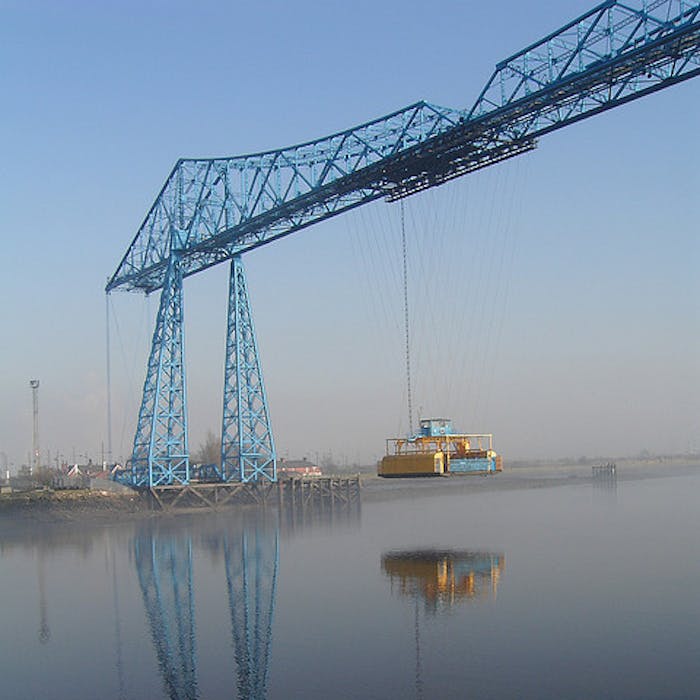
The Tees Transporter Bridge - still hanging on
The Tees Transporter Bridge, also referred to as the Middlesbrough Transporter Bridge, was built to provide an innovative method of crossing the River Tees, at its lowest downstream point, and is the longest remaining such transporter in the world. It carries vehicles or people in a moving 'car', or 'gondola', suspended from the bridge, across the river in 90 seconds.
The Transporter Bridge has been the area's landmark since opening in 1911, and is one of only three working transporter bridges left in Britain. It was conceived as an improvement on relying on ferries to get traffic across the river, as ferry crossings were often impeded by river currents and boat traffic.
The gondola can carry 200 people, nine cars, or 6 cars and one minibus. The bridge carries the A178 road from Middlesbrough to Hartlepool. The bridge's Winch House is grade II listed as are its piers.
In 1872, Charles Smith, then manager of Hartlepool Ironworks north of the river, had put forward the notion of transporting passengers and carriages over the Tees by means of an aerial "bridge ferry". His plan consisted of a fixed high-level girder with a suspended carrying car, but it was never built.
The idea was fully developed by French bridge engineer Ferdinand Joseph Arnodin, who patented the "pont transbordeur" in 1887. Arnodin’s first bridge of this type opened in 1893 at Bilbao, Spain.
In 1906, Middlesbrough Corporation met with Arnodin and later with William Edwin Pease, managing director of the Cleveland Bridge & Engineering Company of Darlington, and its chief engineer, Frenchman Georges Camille Imbault. Imbault had worked on Arnodin’s transporter bridges in several cities.
Construction began in 1909. One notable aspect of it was that some of the below-surface work was carried out in a compressed air environment to stop water invasion, causing some workers to suffer ‘caisson disease’ or ‘the bends’ - which can lead to permanent disability or death.
In recent years the Transporter has emerged as a leading historic visitor attraction and is one of the UK's major sites for extreme sports including abseils, bungee jumps and zip-slides.
In 2011, to mark the Bridge's centenary, the Heritage Lottery Fund (HLF) confirmed a £2.6m award for refurbishment and upgrade work to the Bridge. This included the installation of a glass viewing lift to provide improved access to the upper walkway, renovation of the gondola, and the development of state-of-the-art visitor resources.
Britain's other two surviving historic transporter bridges are in Newport, South Wales, and Warrington in Cheshire.
Further reading
Links to external websites are not maintained by Bite Sized Britain. They are provided to give users access to additional information. Bite Sized Britain is not responsible for the content of these external websites.
